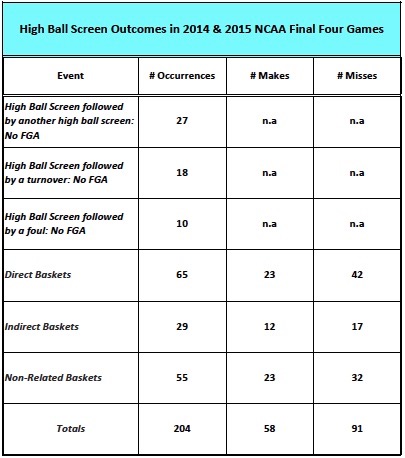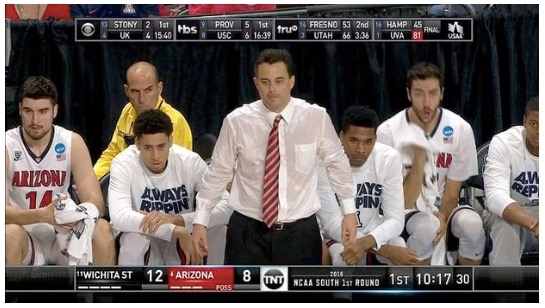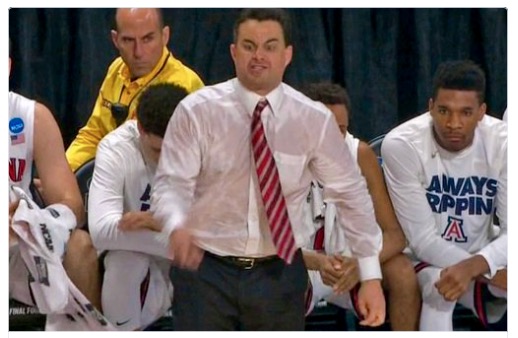Several years ago I went on a rant about the high ball screen – an offensive scheme featuring one or more bigs near the top of the circle trying to free a dribbler for a long jumper or drive down the lane.
For a full-blown critique you can revisit my original post but basically I find it congests the court, takes too long too unfold, and seldom results in a basket.
A short time later I discovered a fantastic piece posted by another basketball blogger, Scott Ginn, over at betterbasketball.com. In a satirical piece entitled Dear High Ball Screen, Let’s Just Be Friends, Ginn questions the effectiveness of the maneuver and supports his claim with an interesting statistical analysis of the 2012 NCAA championship game between Kansas and Kentucky. Here’s what he discovered.
• Total number of High Ball Screens (HBS) attempted: 39
• Total number of direct baskets: 4
• Total number of indirect baskets: 2
• Total number of non-related baskets on a HBS possession: 2
In short, according to Ginn the HBS created six baskets the entire game. It was successful (directly and indirectly) only 15% of the time.
I was intrigued by Ginn’s analysis and decided to go a step further. I charted the 2014 and 2015 Final Fours, six games involving six schools – Kentucky, Wisconsin, Duke, Florida, Connecticut, and Michigan State – using Ginn’s statistical categories and adding a few of my own.
• High Ball Screen followed by another HBS: No FGA
• High Ball Screen followed by a turnover: No FGA
• High Ball Screen followed by a foul: No FGA
• Direct Baskets: a score by either the ball handler receiving the screen or the screener (rolling, popping, etc.) after setting the screen.
• Indirect Baskets: a score by any player as a result of the screen, but not directly related to it. This happens when the screen creates turmoil in the defense and a score results. Or, if the ball handler uses the screen, then pitches for a shot. Or, even if the screener gets the pass and finds an open shooter once help arrives.
•Non-Related Baskets: those scores on any possession where a HBS was used, but had nothing to do with the score. For example, a HBS is set, the defense stops it, the offense resets (calls a play, runs a motion, etc.), and scores. That basket had nothing to do with the HBS except that it occurred on the same possession.
And the results?

In six games at the highest level of competition the high ball screen produced direct and indirect field goals only 17% of the time – not significantly different than what Ginn discovered. That’s a lot of work to generate 35 field goals in 240 minutes of competition.
I’m reminded of an old basketball adage: Don’t drive into a loaded defense. The high ball screen does exactly that. With the screener comes a second defender and because the maneuver occurs so far from the basket the defense can load up with additional defenders from the help side. Unless you have a Steve Nash or Steph Curry on your squad, complimented by a big man who can move and shoot, you’re likely to generate lots of dribbling and not much scoring.



